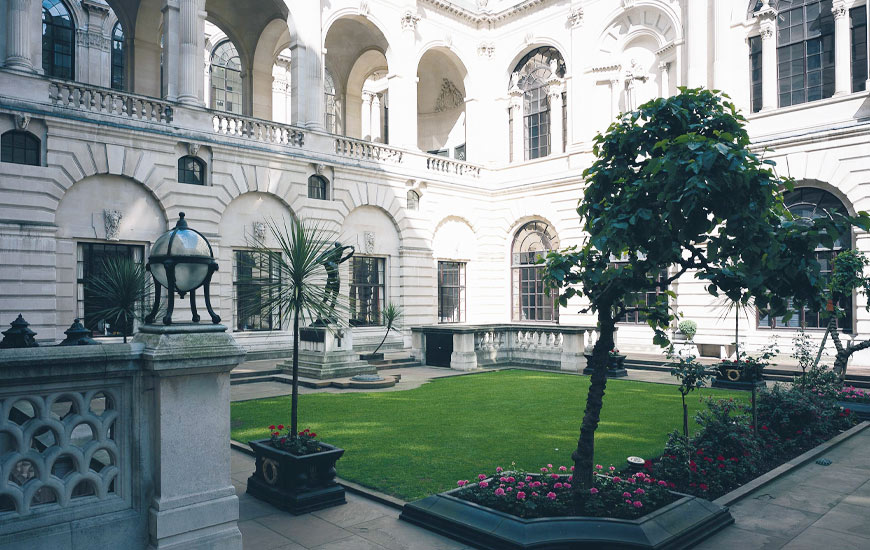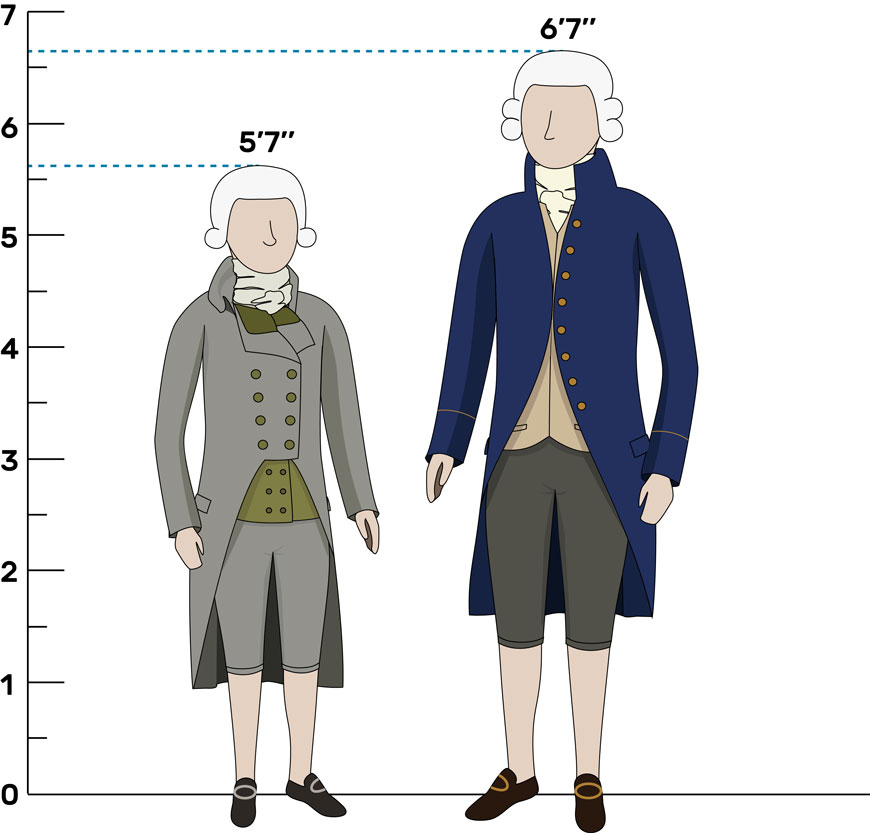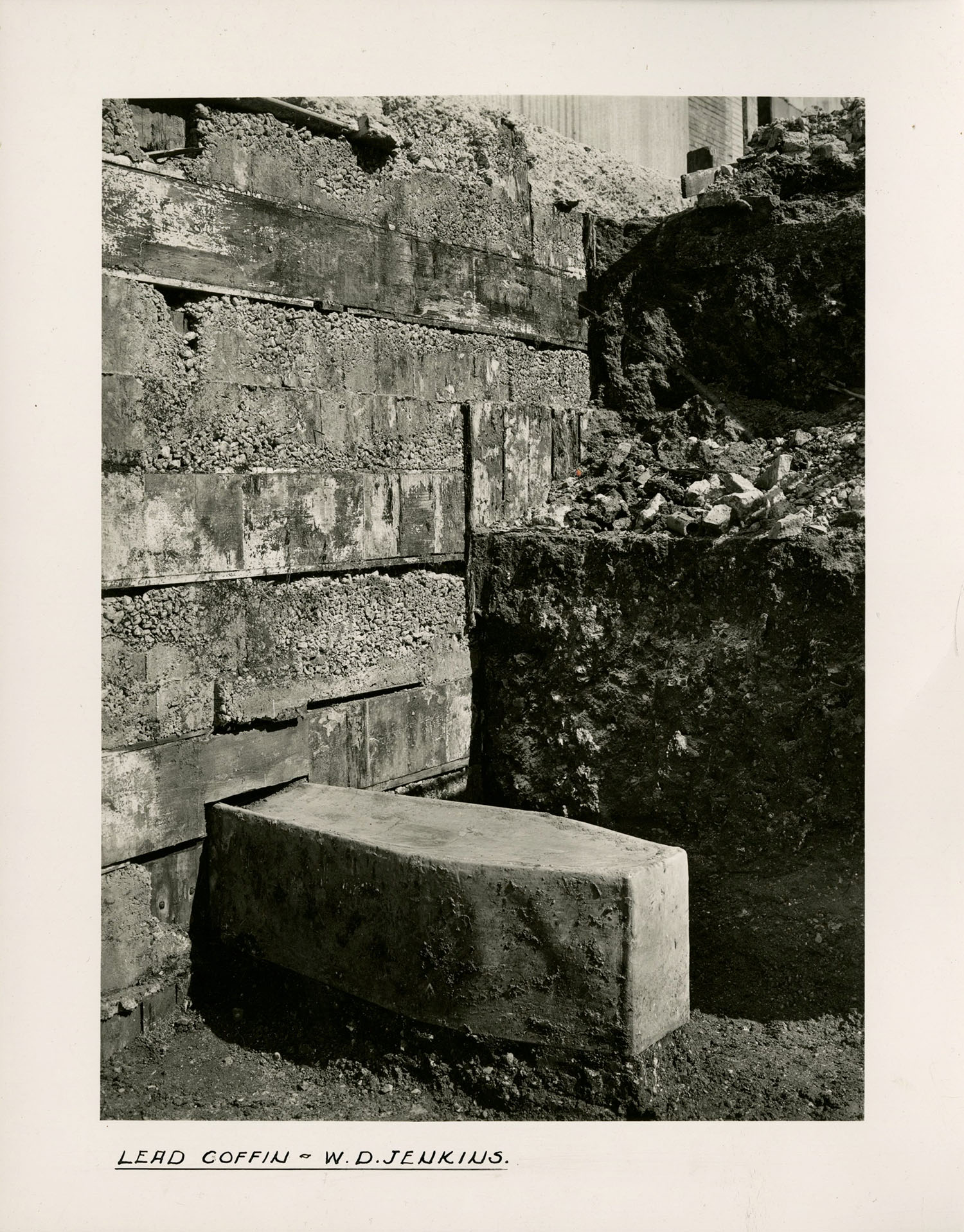Why was there a graveyard inside the Bank of England?
The Bank of England moved to its current site on Threadneedle Street in 1734. We quickly outgrew our first building so to expand further we bought a church that was situated next-door.
The church was deconsecrated and demolished, but its graveyard was left in place. This later became our Garden Court.

The Bank’s Garden Court today
Who was buried in the graveyard at the Bank?
William Jenkins was an employee who worked here for nine years in the late 1700s.
On his death in 1798, Jenkins’ friends asked permission to have his body buried in our Bank’s Garden Court.
Our Directors granted the request and Jenkins was buried very early one morning, before the start of the working day.
Why did Jenkins’ friends want to bury him in the Garden Court?
Jenkins was 6ft 7½ inches tall (202 cm) – much taller than the average man at that time, who would have been 5ft 7 inches (170 cm).
Jenkins was in poor health in the weeks prior to his death.
He was worried that because of his height, his corpse would be stolen by body snatchers following his death and sold to surgeons.
The going rate for a skeleton of this size in 1798 was in the region of 200 guineas. Because of inflation in the period since then, that would be around £25,000 in today’s money.
Jenkins’ friends argued that the Garden Court would be the safest place for him given the risk of being taken by body snatchers – which was something that had made him “considerably disturbed in his mind” before his death.
Where is Jenkins now?
The Bank was completely rebuilt in the 1920s and 1930s, and Jenkins’s coffin was found when the Garden Court was dug up. Along with the other coffins found, it was moved to Nunhead Cemetery near Peckham, South London. However, Jenkins’ coffin proved to be too long to fit in the vaults there, so arrangements were made for it to be placed in the catacombs:
Jenkins’ Coffin (1933)
So there are no longer any graves in or under our Garden Court today. At least, not to our knowledge…
